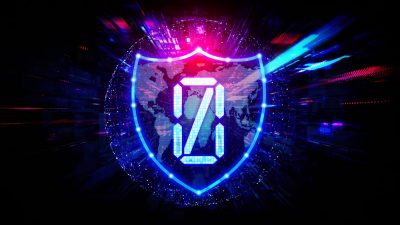Cloud adoption has been remarkable over the course of last few years, according to the recent report by the IDG around 90 percent of the organizations are having certain applications or infrastructure that is running on the cloud. The acceptance rate of Cloud has seen exponential growth with improved storage options and low cost of cloud storage solutions. It’s estimated that by 2021 every business would be using the cloud technology either as a storage solution or infrastructure framework for business requirements. Currently, 53 percent of the organizations are running their business operation on traditional networks. According to the report given by IDG, almost 31 percent of the current traditional network business users will shelve them over the course of a year or so. The largest segment of the cloud in the market currently is being derived by the IaaS. Forrester forecasts that all the largest six public cloud providers led by AWS, Azure, Google, IBM, Alibaba, and Oracle will only grow larger in the year 2019. If we observe the current market it is majorly dominant by the IaaS, controlling almost 84 percent of the market by 2020. The positive growth of the cloud environment will dominate the technology market and it will assist all the current providers to offer exponentially growth with customized offerings. While PaaS is staring towards the growth that will assist the cloud growth. Cloud-based storage and SaaS are markets that grew rapidly over time and with every organization are one or more technology solutions. The SaaS players like Salesforce according to Gartner represents close to 30 to 40 percent of IT spending in large enterprises.
Raising the bar of the security challenges
For many enterprises the current scenario of cloud technology that offers operational flexibility and reduced costs, that has caused many of them to hurry-up the onboarding of cloud solutions. Without a comprehensive security strategy that can place the cloud technology under security threats that will not only disrupt the sensitive data storage on the cloud but also affect the business operation. Most of the organizations are adopting the cloud solutions even bypassing the security criteria and without checking the implication of any new tech. The security challenge is rapidly becoming more complicated with the multi-cloud deployment and most organizations don’t have a unified system in the place to cater with monitoring, managing or securing any of these resources. Failing to address the current security challenges has put many of the organization at risk. Gartner recently predicted that by 2020 almost 33 percent of the attacks on enterprises will be more focussed towards the Shadow IT resources. To improve the current security infrastructure and understand business requirements that will deliver the security strategy. Currently, there are two approaches most of the cloud providers are following to make the enterprises understand about the threat and adopt technical changes in the given market.
Human Approach
Cloud Providers and security experts have to lead an internal PR campaign that will educate the leaders and users about various risks involved with freewheeling adoption of the cloud. The technical experts of an organization that will deal with cloud adoption need to make the C-suite leaders understand with various businesses strategies that will help the security teams to strategies the business adoption of cloud. The challenge is however with making the progress slow and restricting the business opportunities or finding better solutions for all. Various organizations and individuals are looking to adopt new cloud services and with many of them looking towards their understanding of requirements and objectives, IT security experts are sure to make that the security solutions can be easily integrated into those cloud storage. IT experts can advise on various security solutions that will reduce the incoming risks without affecting the business advantages. The human touch depends a lot on all different advantages such as listening, building trust and diplomacy all the soft skills that need to be emphasized towards in the process.
Technical Approach
As we influence the decision makers it depends a lot over various technical solutions that we offer. Here certain foundational elements that can affect the security issues.
1. Securing with integration
The basic part that improves the security policy for the complete organization is covering various cloud and security tools in place that will enable you to see, control, and respond to security threats even as the network they are defending evolves. Cloud technology should have broad deployment, scaler integration, centralized management, and complete orchestration along with managed threat response for all solutions.
2. Traditional controls and Integrate connectors
Having a managed security solution integrated into the cloud environment does not offer complete protection from various threats. Native cloud control offers better-integrated solutions with control over data security and manages the data transactions. Security is a challenge and with every challenge we have to understand various cloud environments, it can add certain gaps in the security framework. Cloud connectors are designed specifically based on each of the different IaaS vendors that enable organizations to quickly and easily deploy cloud-based security solutions.
3. Establishing the secured access controls
Access control will depend on several vertical activities that are carried out through a single range of communication. Any device, application, transaction or workflow that interacts with infrastructure should be put through levels of tests. Network access control provides an extra layer of security without the unnecessary overhead for all the devices.
Conclusion
Cloud computing should be based on the solution not on security risks. It’s one of the most important reasons why many of the entries are still ignoring the security challenges we face with every security policy and solution in place. The protection layer that will assist them in securing the cloud-based assets and organizational resources, cloud adoption can introduce more risks and overhead challenges. The growing challenge with the security leadership teams is fostering the secured environment along with business enablement. Though with the recent generation of investment from cloud providers we are able to see a secured cloud environment that can secure data and networks.
To know more, you can download our latest security solutions whitepapers.














